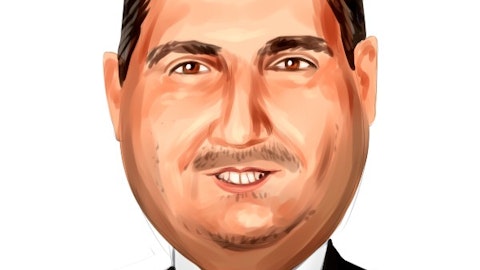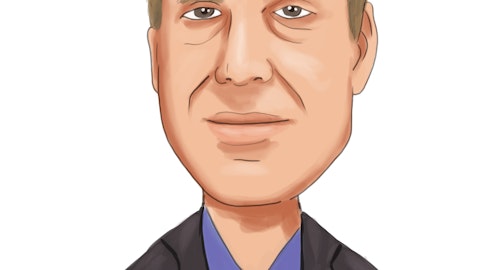And then your question around the lumpiness of the cash flow. Q1 is always going to be a little bit, and I think most companies have this, right? There’s a lot of cash outflows that go through Q1. So I think in the future, you’ll see that continue to be a bit more of a negative quarter. We’ll work at it. Q2, I think we’ve got some work to do to make sure that we level that out. And hopefully, Q2 is more positive than this year. I think it was slightly positive, but like to keep working that. Q3 and Q4 always have been pretty strong cash quarter. So we’ll keep at it.
Mike Salvino: Bryan, does that answer your question?
Bryan Bergin: Yes, please. Just on bookings and demand, Mike, so good to see the broad-based performance across the offerings. Can you talk about near-term pipeline now you’ve got some of those larger deals over the line that you were holding back? And just any change in client sentiment and sales cycles and things like that, just given the macro?
Mike Salvino: Well, look, the client sentiment is pretty simple. We €“ the whole industry is focused on efficiency. It’s focused on cost savings. And what we’re seeing is that the deals will be larger, just like the $800 million number that we gave, and they’re taking a little bit longer. The other thing that we’re seeing out in the industry is the fact that, look, customers are still focused on revenue, but it needs to be immediate impact. So when I boil that all up and look at our offerings, I look at the ITO offering, there’s not going to be too many audit committees at these companies’ Boards that will take that spend down. And the reason for that is because they don’t want any cybersecurity attacks. So we’re still seeing demand for that offering.
The second is when you look at modern workplace, we’ve still got a lot of companies that are supporting a major, major part of their population, their employee base and a virtual mindset. So you can’t really curtail that spend too much. And then when I look at the ability to drive revenue, that’s what our engineering business does. And I’ve said over and over again, we’ve got unique skills. I continue to look at that business and see double-digit growth, along with a very solid book-to-bill. So from a demand standpoint, it’s hard not to be cautious. But look, I mentioned on the last call that I’m adjusting the sales model. And I think focusing on what I call relationship selling in GBS, which means we go build the deep relationships and then sell our offerings based on strategic points of view that will either drive revenue or decrease cost.
And then look, the GIS business is always going to be there, and what we need to do is continue to win in the marketplace. So I love the new logos, and I love the better economics. So Bryan, that’s how I’d answer your question.
Bryan Bergin: All right, great. Thank you guys.
Mike Salvino: Thanks, Brian. Brent, next question.
Operator: Your next question comes from the line of Ashwin Shirvaikar with Citi. Your line is open.
Mike Salvino: Hi, Ashwin.
Ashwin Shirvaikar: Hi, Mike. Hi, Ken. Good evening and good to hear from you all. I want to go back to free cash flow, but talk about deployment. I see the deployment notes with regards to the immediate buyback pay down. Could you talk a little bit more granularly about the timing of those? And it was interesting to see that tuck-in M&A was not specifically noted. Basically, what are you broadly thinking as it relates to ongoing deployment of free cash flow?
Mike Salvino: Okay. So why don’t you take the immediate? I’ll take the long-term.





